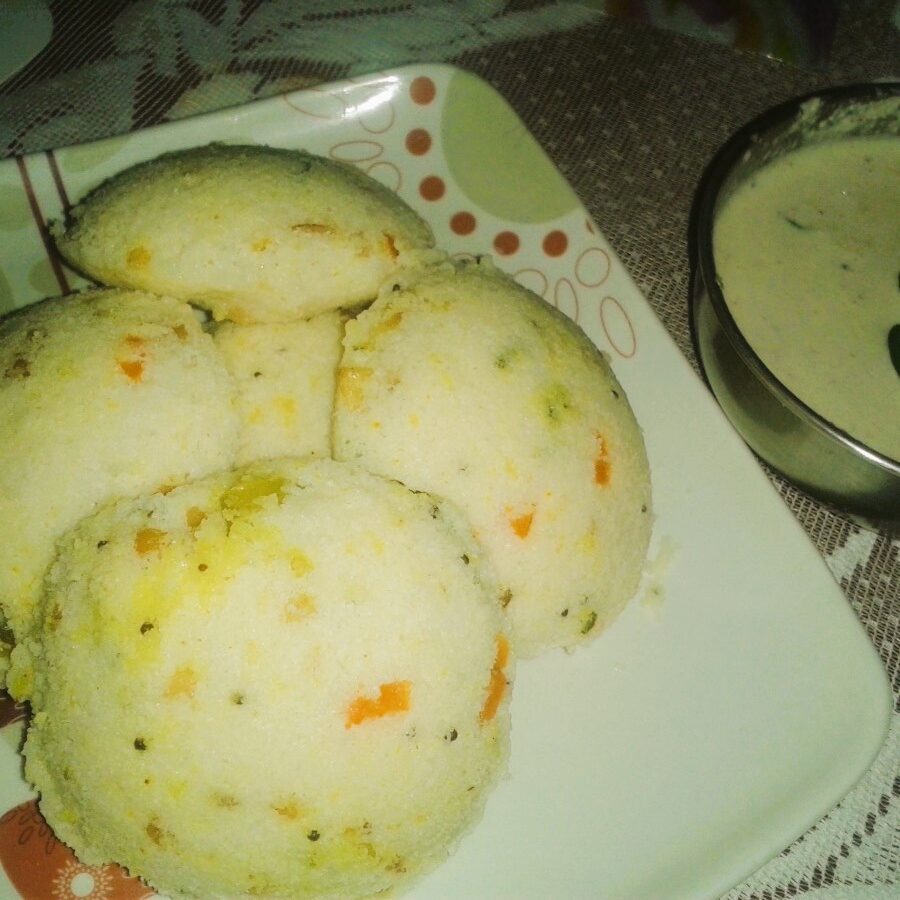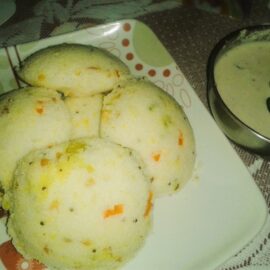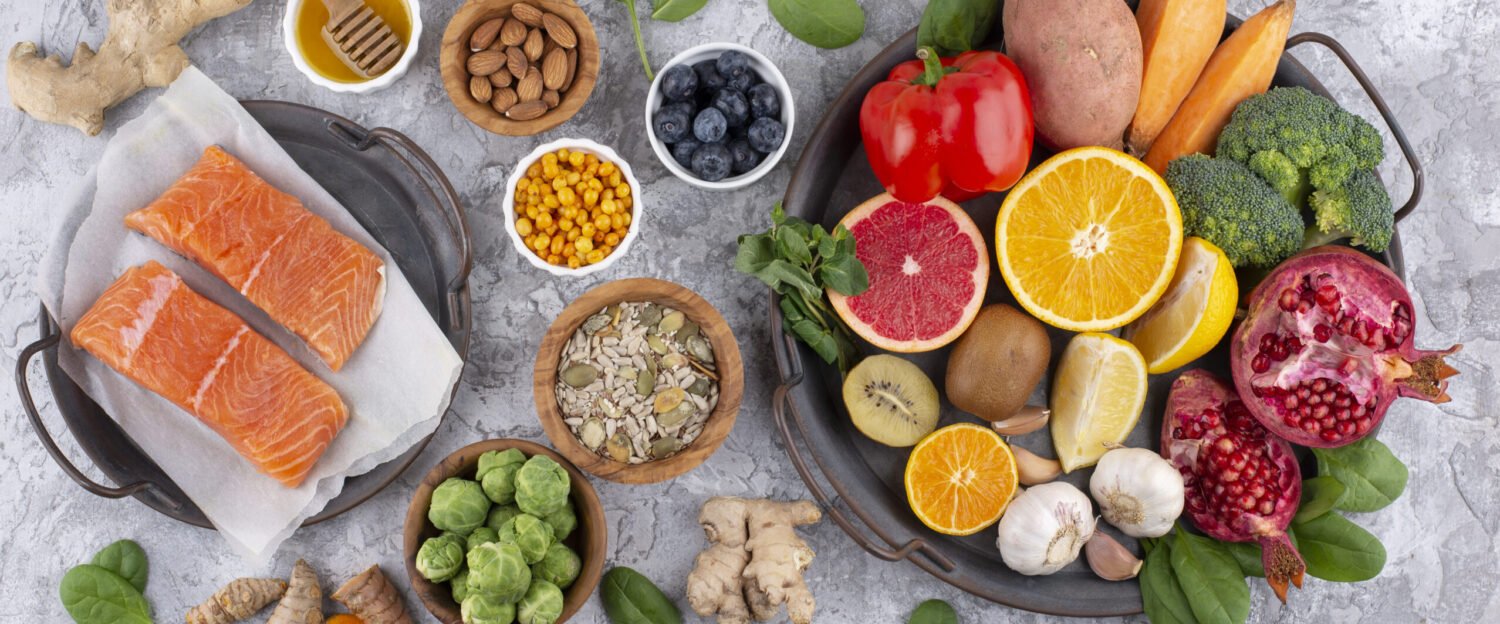
Table of Contents
Introduction:
Tadka Idli – a nutritious breakfast, holds a special place in the morning routines of South Indian states, particularly Andhra and Tamil Nadu. Make healthy lifestyle by making idli a regular part of your breakfast, accompanied by zesty ginger chutney, coconut chutney, or flavorful sambar.
This traditional South Indian dish has transcended its regional roots and gained global popularity. Idli, a savory rice cake, serves as a versatile and fulfilling option for a staple breakfast or a light snack, reflecting the diversity and richness of Indian cuisine worldwide.
Key points to Remember:
Certainly! If you’re looking for a unique twist on traditional idlis, you can try making “Tadka Idlis.” Here’s a recipe for a unique and flavorful variation:
- What are Idli Mix Ingredients:
- The main ingredients include Idli rice and urad dal (black gram). The rice and dal are soaked, ground into a batter, and then fermented. Fermentation is a crucial step in the traditional making process, as it contributes to the light and fluffy texture of the final product.
- Preparation:
- Soak rice and urad dal separately for a few hours. They are then ground into a smooth batter using water. The batter is mixed, seasoned with salt, and left to ferment overnight. The fermented batter is poured into special molds and steamed until it solidifies into soft.
- Variations:
- While the traditional idli is made with rice and urad dal, there are variations that include other ingredients such as semolina, millet, or oats. These variations offer different textures and flavors.
- Accompaniments:
- Tadka Idlis are often served with an array of accompaniments, including coconut chutney, sambar, ginger chutney and various types of savory powders and spicy chutneys. The soft and neutral nature makes them a perfect complement to these flavorful side dishes.
- Nutritional Value:
- It is a healthy food option. They are a good source of carbohydrates and proteins, and since they are steamed rather than fried, they are low in calories and fat. Additionally, the fermentation process enhances the nutritional content by breaking down some of the anti-nutrients present in the grains.
- Popularity:
- Idli is not only a popular dish in South India but has gained widespread popularity across the country and internationally. It is often served in Indian restaurants worldwide and has become a favorite among those who appreciate diverse and flavorful cuisines.
- Versatility:
- Idlis are versatile and can be enjoyed in various ways. Apart from being a breakfast item, they can be served for lunch or dinner. Leftover can also be used in different recipes, such as upma or spicy masala, fried idlis.
Breakfast Recipes:
- Crispy Dosa
- Coconut chutney
- Sambar
- Upma
- Mysore Bonda
- Poori
- Masala Dosa
- Pesaratu
Tadka idli Recipe Card:
Here’s a recipe for a unique and flavorful variation:

Tadka Idli Recipe
Ingredients
For Idli Batter:
- 2 cups idli rice
- 1 cup urad dal black gram
- 1/2 teaspoon fenugreek seeds optional
- Salt to taste
Vegetables-
- 3 tsp Carrot grated
- 1 tsp Beans family thinly sliced
- 2 tsp Coriander Finely Chopped
Nuts-
- 3 tsp Cashew
Tadka-
- 1 tsp Urad Dal
- 1/2 tsp Mustard seeds
- 1/2 tsp Turmeric
- 1tsp Chana Dal
Instructions
Wash and Soak:
- Rinse the idli rice and urad dal separately.
- Soak the idli rice and fenugreek seeds together in a bowl with enough water for about 4-6 hours.
- Soak the urad dal in a separate bowl with enough water for the same duration.
Grind Urad Dal:
- Drain the water from the soaked urad dal and grind it in a blender or wet grinder with a little water until it becomes a smooth, fluffy batter. This may take around 15-20 minutes.
Grind Idli Rice:
- Drain the water from the soaked idli rice and grind it to a slightly coarse texture. The texture should be finer than semolina but not as fine as flour.
Mix the Batters:
- Mix the urad dal batter and the idli rice batter together in a large bowl. Add salt and mix well. The consistency should be similar to pancake batter.
Fermentation:
- Cover the bowl and let the batter ferment in a warm place for 8-12 hours or overnight. The batter should rise and become airy.
Prepare Idlis:
- After fermentation, mix the batter gently. If it’s too thick, add a little water to achieve the right consistency.
Tempering: Tadka
- Heat oil in a pan. Add mustard seeds, urad dal, chana dal, curry leaves, and chopped green chilies. Sauté until the dal turns golden brown.
- Add this tempering to the idli batter and mix well.
Steam the Idlis:
- Grease the idli molds with oil.
- Pour the batter into the molds.
- Steam the idlis for about 12-15 minutes or until a toothpick inserted comes out clean.
Serve:
- Allow the idlis to cool for a few minutes before removing them from the molds.
- Serve hot with coconut chutney, tomato chutney, or any chutney of your choice.
Nutrition:
The nutritional values for tadka idli can vary based on the specific ingredients and quantities used in the recipe. Below is a general overview of the nutritional components considering the typical ingredients used:
Nutritional Values Per Serving (approximate, based on standard ingredients):
| Calories: 150-200 kcal |
| Protein: 5-8 grams |
| Carbohydrates: 25-30 gram |
| Fat: 3-6 grams |
| Fiber: 2-4 grams |
Key Nutrients and Health Benefits:
- Protein:
- It contain a moderate amount of protein, primarily from the urad dal in the batter.
- Carbohydrates:
- The main source of carbohydrates comes from the rice in the batter. Carbohydrates provide energy.
- Fat:
- The tadka, which includes mustard seeds, urad dal, and oil, contributes to the fat content. It’s worth noting that fat is essential for nutrient absorption and overall health.
- Fiber:
- The fiber content can vary based on the type of rice used and whether whole grains are incorporated. Fiber aids in digestion and promotes a feeling of fullness.
- Vitamins and Minerals:
- This may provide some B vitamins, particularly from the fermentation process and ingredients like curry leaves. The dish may also contain minerals such as iron and calcium from the urad dal.
Tips for a Health:
- Whole Grains:
- Use whole grain or multigrain batter for added fiber and nutrients.
- Healthy Oils:
- Choose heart-healthy oils like olive oil or mustard oil in moderation for the tadka.
- Vegetable Additions:
- Incorporate chopped vegetables into the tadka for extra vitamins, minerals, and fiber.
- Portion Control:
- Enjoy in moderation as part of a balanced diet.
Remember, these values are approximate, and actual nutritional content can vary based on specific ingredients and cooking methods.
